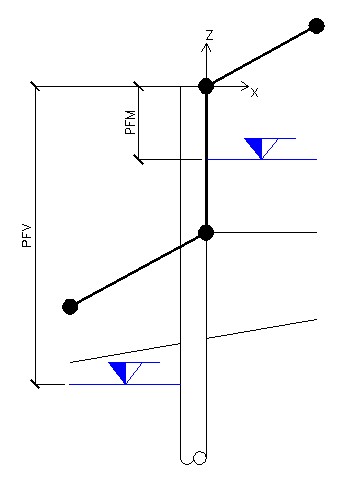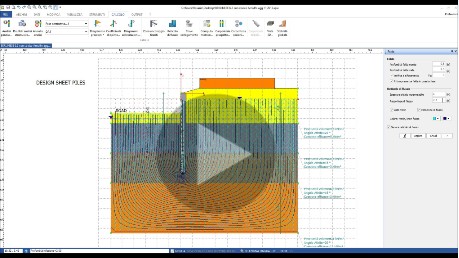The presence of a possible groundwater conditions the calculation both from the geotechnical and structural point of view. That is why in the software the effect of the groundwater is taken into consideration including possible filtration problems.

As regards the groundwater, the data to be entered is the following:
•Upstream groundwater depth: Is the depth – with respect to the horizontal level passing through the reference general system – of the free surface of the groundwater upstream the bulkhead, expressed in m.
•Downstream groundwater depth: Is the depth – with respect to the horizontal level passing through the reference general system – of the free surface of the groundwater downstream the bulkhead, expressed in m.
•Siphoning check: Allows carrying out or not the siphoning check, executed upon the first (or the shortest) flowline.
•Activates presence of groundwater in this phase: As it has already been mentioned above, the software allows defining more calculation phases. Through this information it is possible to choose whether the groundwater must be considered in the calculation of the current phase.
•Thickness impermeable layer: Identifies the depth at which the impermeable layer is situated, expressed in m.
•Flowlines spacing: Defines the display density of the flowlines, expressed in m.
•View Mesh: Allows viewing the calculation grid used for the solution of the filtration problem.
•View Flowlines: Allows the display of the flowlines. It is possible to choose the colors of the calculation grid and flowline.
•Generate flow grid: Allows carrying out the filtration analysis.
As regards the data which defines the profile of the groundwater it is advisable to refer to the following figure:

In the figure, PFM is what in the groundwater data window is defined as the upstream groundwater depth, while PFV is what in the groundwater data window is defined as the downstream groundwater depth.
© GeoStru
